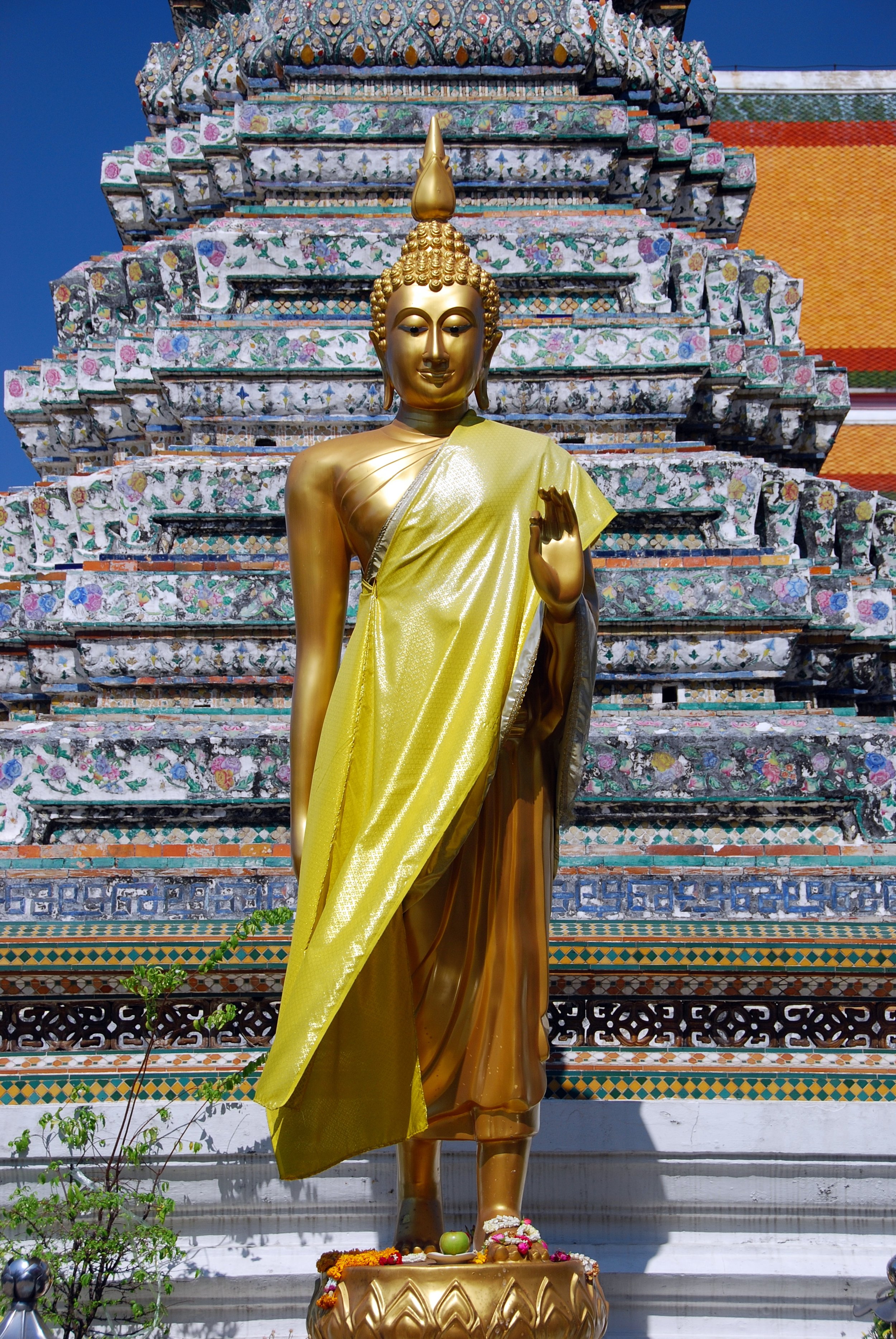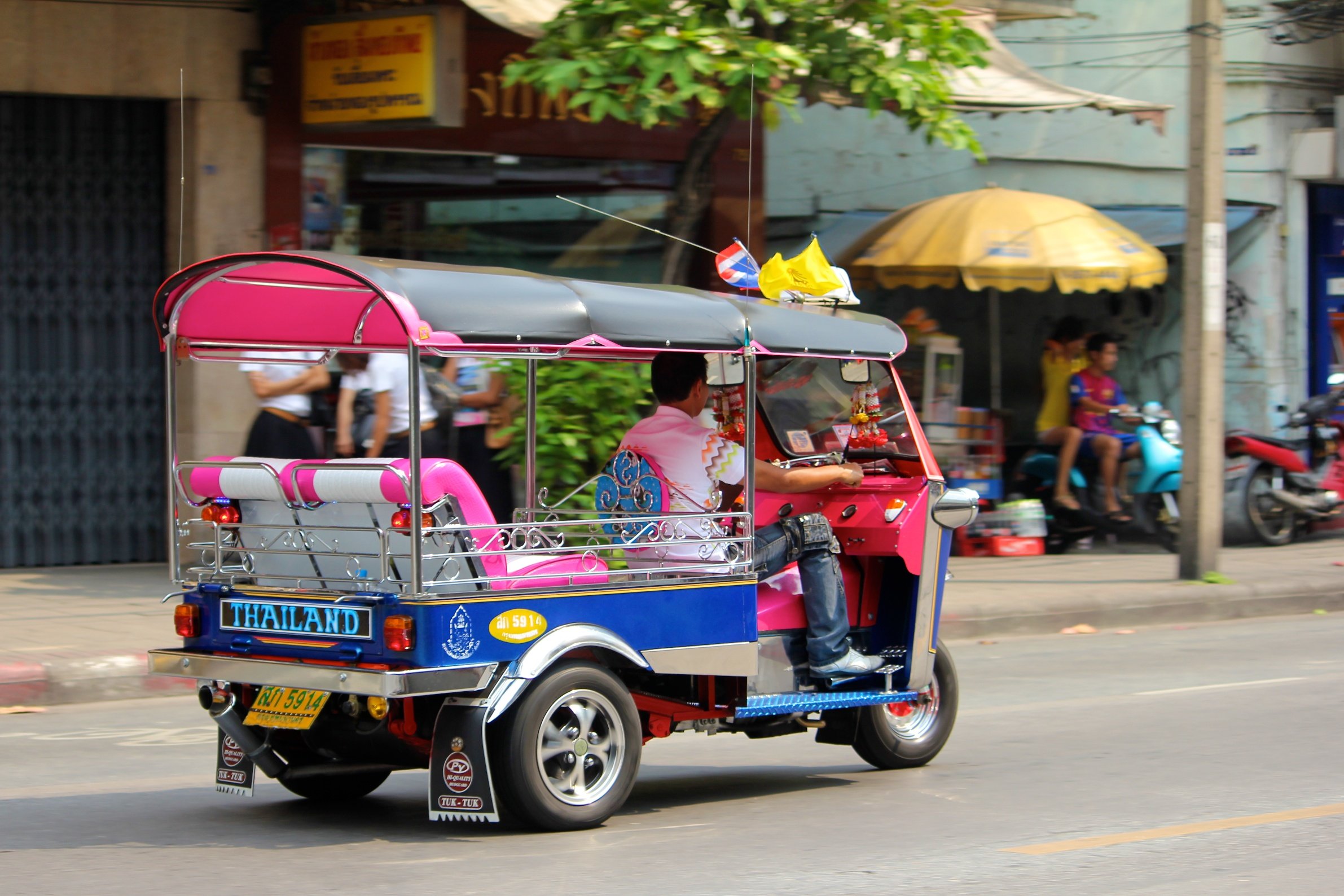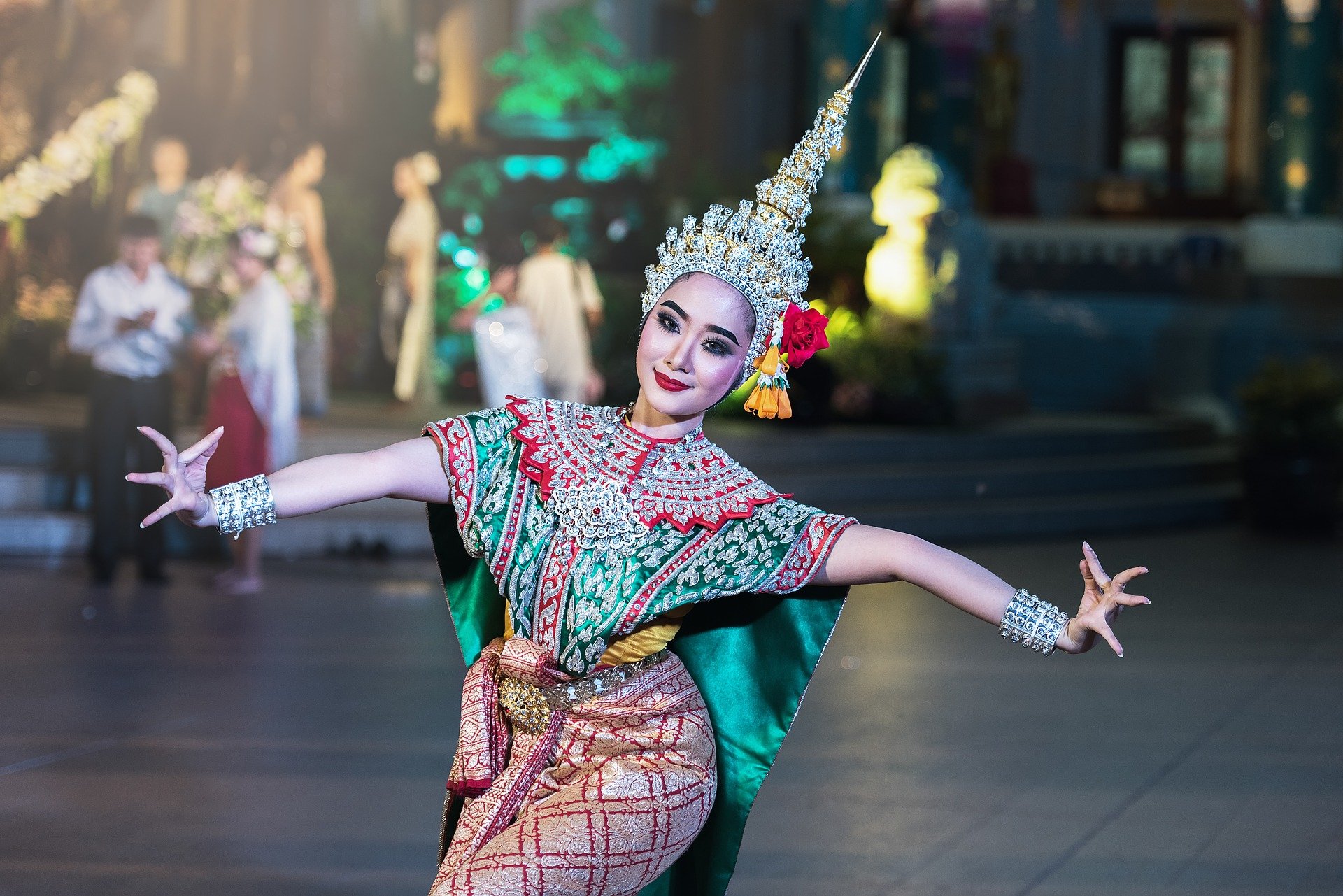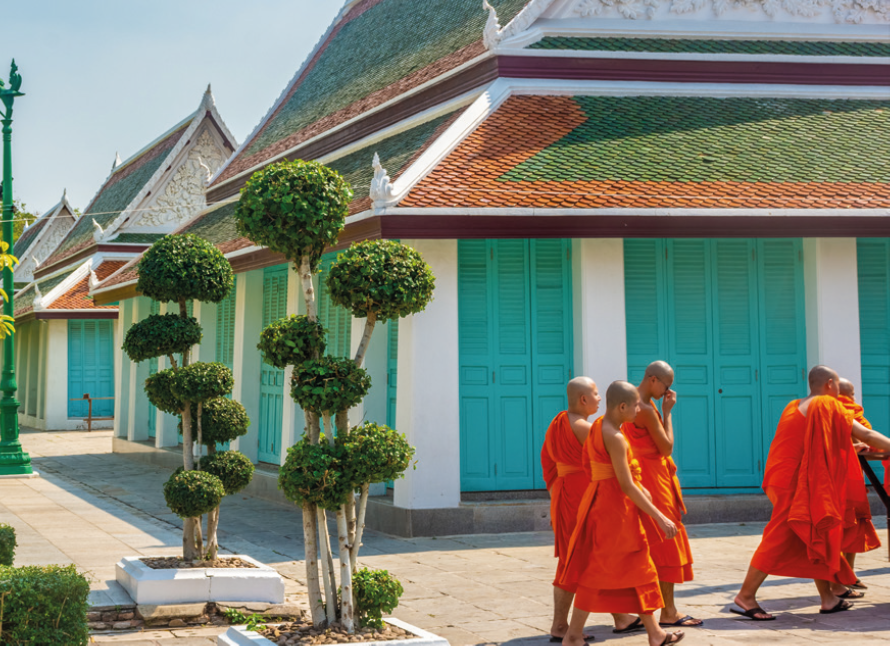The City of Angels
Bangkok is one big crazy city but, as Norah Casey discovers, beneath the chaotic veneer you’ll find beautiful people, amazing food and the most stunning of sights.
Chinatown Bangkok Thailand
Bangkok is moving fast and everything bar the traffic is surging outwards and upwards creating a city sprawl of over 11 million people. My sense is that city planners are few and far between in the city. Futuristic skyscrapers erupting from the sprawling streets seem incongruous in a city teeming with the most revered sacred spaces of the ancient orient. So it is that you can wander through the most beautiful of timeless temples while gazing upwards at the gleaming towering office blocks that symbolize the growing economic prosperity at the heart of Thailand.
I first went to Bangkok in my 20s when the city was dealing with an influx of displaced elephants and mahouts from the logging industry in Chiang Mai. It was surreal to see these large matriarchs so used to the lush forests holding up multiple lanes of traffic on the Sukhumvit oblivious to the cacophony of honking horns. The colours, the sounds, the smells and the bizarreness of the city was overwhelming.
Tuk-Tuk drivers pushed picture menus of unspeakable things almost all involving ping pong balls and every journey was a near death experience, ducking and diving around the mad traffic. Bangkok is the second most dangerous city for driving in the world after Libya.
City of Angels
Thai people tend to shorten words and phrases which is why Bangkok came to be called Great City of Angels, the first four words of the unpronounceable 45 word long ceremonial name for the city. And it is angelic. There are many sides to Bangkok so despite the urgency of the crowds and the cars the Thai people are more serene than stressed. Greetings come in the form of the graceful wai and the words of welcome sawatdee. The lifestyle is also laid back. A watchword for Thai people is Sabai, being happy or relaxed, but to add emphasis you are more likely to hear Sabai Sabai – roughly translated meaning tranquil or chilled. While getting lost in the Soi (streets) of Bangkok is a regular occurrence, staying chilled is the only response.
This time my schedule was as crazy as Bangkok and thanks to the local Irish I did more in a few days than on all of the other trips combined. So here’s how to do Bangkok at speed.
Best of Bangkok
1.The Royal Temples
Bangkok has amazing temples (over 400) and beautiful, historic, monumental palaces that are a must on any visit. I have done the main ones many times and I still find them awe-inspiring. On the itinerary should definitely be the Grand Palace and opposite it on the left bank of Chao Phraya River, the magnificent sparkling spires of Wat Arun covered in porcelain and colourful glass. The distinctive Temple of Dawn is magical at nighttime when the lit spire glows over the river. Google Bangkok and your screen will be flooded with images of the former home of the Thai King, The Grand Palace, built back in 1782 and the most renowned and revered landmark in Bangkok. Expect to lose hours in the compound in a maze of Buddhist sculptures, mosaics and temples dating back to the foundation of the city. The highlight and most sacred being the 14th century Wat Phra Kaew, the Temple of the Emerald Buddha.
2.The Reclining Buddha
The 46-meter-long giant reclining gold leaf Buddha is well worth visiting at Wat Pho, one of the largest and oldest temples and home to the original Thai massage. Wat Pho has the largest collection of Buddha images in Thailand and houses the national headquarters and centre of education of traditional Thai medicine and massage.
3.Floating Markets
The floating markets, made famous by Roger Moore’s James Bond in The Man with the Golden Gun, with boats piled high with exotic fruit and overladen with fresh vegetables are really worth visiting. Top of the list for visitors is Damnoen Saduak but you can also catch this magical spectacle at Amphawa, and Klong Lat Mayom
4.Jim Thompson’s House
The mysterious disappearance of architect, designer and silk magnate Jim Thompson on a hiking trek in 1967 makes a visit to his house another must do on the list. Minutes from the madness of central Bangkok, this peaceful place will transport you back in time. Thompson’s home is actually a collection of six separate teakwood Thai houses on stilts set among tropical foliage on the Saen Saeb Canal. Thompson’s passion for Thai art shines through with Chinese porcelain, ancient scrolls, sculptures and many other treasured artifacts on display.
5.The ‘Red Light’ District
The seedy side of Bangkok is never too far from the surface and for a slice of Bangkok life take a trip to Patpong where a night market predominantly selling fake brands shares space with illicit bars and night clubs selling sex shows, including the infamous coke bottle and ping pong shows. These two parallel roads, next to Silom Road, Patpong 1 and 2 are big tourist attractions so beware of rip-offs.
6.Khao San Road
Backpackers flock to Bangkok or more specifically Khao San Road, a crazy strip of bars, market stalls and plentiful cheap accommodation. This time I took a hasty walk through the crowds from one end to the other and not much has changed. Khao San comes alive at night and everything is on sale from platters of crunchy crickets to sidewalk tattoos, on-street massage, buckets of Thai whiskey (ridiculously cheap), knock off jeans and hordes of western twenty something year olds who mistakenly believe they are experiencing the real Bangkok. Worth a visit but not worth lingering too long.
7.Thai Massage
A Thai massage should be a daily treat with perhaps a foot massage in the late afternoon after a day's sight-seeing. Steer clear of the Khao San Road mass massage beds and head for a local shop. They’re plentiful, usually on many floors with foot massage at street level and pressure point full body Thai massage on upper floors.
8.Birds Eye Views
Sky high dining and drinking is the thing to do in Bangkok (I prefer low rise myself). After much debating between the locals who all have their favourite vertiginous venues we headed for the tallest building and the 360 degree rotating viewpoint of the Sky Bar, the 63 story high rooftop bar made famous by Hangover 2 at Lebua State Tower (lebua.com). The sunset over the river was stunning when I eventually opened my eyes and the Hendricks was definitely better than the movie-inspired Hangovertini cocktail.
9.Visit Chinatown
Yaowarat, the pulsing heart of the city’s Chinatown, is full-on with horns blaring amid a cacophony of bang snaps, noisy toys designed to frighten away the fearsome New Year dragon, Nian. It’s a feast of the senses with competing street food vendors steaming, frying and basting all manner of strange meats with every nook and cranny filled with rickety tables and folding chairs for waiting diners. The street food is fantastic here. We ate Pad Thai for a few euros, slurped steamed coconut puddings for dessert and bought pineapple on sticks to eat on the go. If you don’t fancy going by Tuk-Tuk then the easiest way to get to Chinatown is by the Chao Phraya River Express and get off Ratchawong Pier or use the underground (MRT) to Hualamphong station.
10.Chatuchak Weekend Market
Markets are great in Bangkok and the massive Chatuchak Weekend Market is a magnet for over 100,000 visitors weekly. It’s overwhelming but well worth the trip with nearly 10,000 stalls selling everything from pets to antique, crafts, furniture, books and food and much more besides.
11.MBK Centre
A trip to the gigantic eight story low price MBK, also called Mahboonkrong, in the Siam area next to the National Stadium BTS will take hours, most tourists get lost in this shopping mecca for designer fakes, cheap souvenirs and all manner of electronic goods, many of uncertain origin. Brush up your haggling skills and be prepared to be subsumed by the lure of shiny tat. It's infectious.
12.The Flower Market
I would move to Bangkok for the flowers alone. The local women I was with were stocking up on beautiful roses (50 for a euro) and gorgeous lilies as we wandered through the fragrant frantic home of all things botanical. The flower market on Maharat Road also called Pak Klong Talad comes alive in the early hours of the morning. The distinctive Buddha offerings of white and orange flower chains were piled high as all generations from children to grandparents patiently threaded the delicate tiny flowers for worshipers.
13.Lumpini Park
Lumpini Park is Bangkok’s Central park and a great place to leave the city without leaving the city. Catch one of the evening dance workouts or early morning tai chi. You can stroll around marveling at the park’s resident water monitor lizards (crocodile like creatures but non meat eaters!) or row a boat on the lake.
14. Tuk-Tuks, Trains & Motorbikes
If you want to avoid sitting in the permanently rush hour traffic, then take the Bangkok Mass Transit System otherwise known as the BTS Skytrain. It's really easy to use, cheap, efficient and air conditioned. Once you’ve mastered it you will never venture forth in a car or at least limit taxi journeys to and from Skytrain stops. There is also an underground MRT which links from the train station at Hua Lamphong all the way north to Chatachak. Bangkokonians will jump on the back of a motorbike for cheap and quick traffic dodging journeys but you’ll be taking your life in your hands. Tuk-Tuks are fun, worth doing once, not that convenient for long journeys, agree to a price beforehand and hold on tight. You may have to take a taxi on occasion but make sure the driver uses the meter.
15.Tat Bat (alms-giving)
I got up very early one morning and headed out onto the streets to witness for the first time the Buddhist tradition of Tak Bat the morning alms-giving to the saffron-robed monks who head out from the temples usually between 5am and 7am. This is well worth the early morning start. The monks walk barefoot in single file with the most senior monk going first, each carrying a large silver bowl. There is a serenity and beauty to the ritual of the giving of rice and other food gifts by lay people, many of whom get up early to cook the offering. The procession passes along rows of people kneeling, head bowed in humility waiting to place the rice silently in the monks’ alms bowl. It is a deeply meaningful religious interaction and is central to the core Buddhist belief in giving back and gaining merit for the afterlife. Make a plan to get up early, it really is worth it. You can see the monks almost everywhere in the early morning but for guaranteed viewing head to the beautiful marble temple of Wat Benchamabophit in the Dusit district where the monks head out around 6am onto Nakhon Pathom road.












